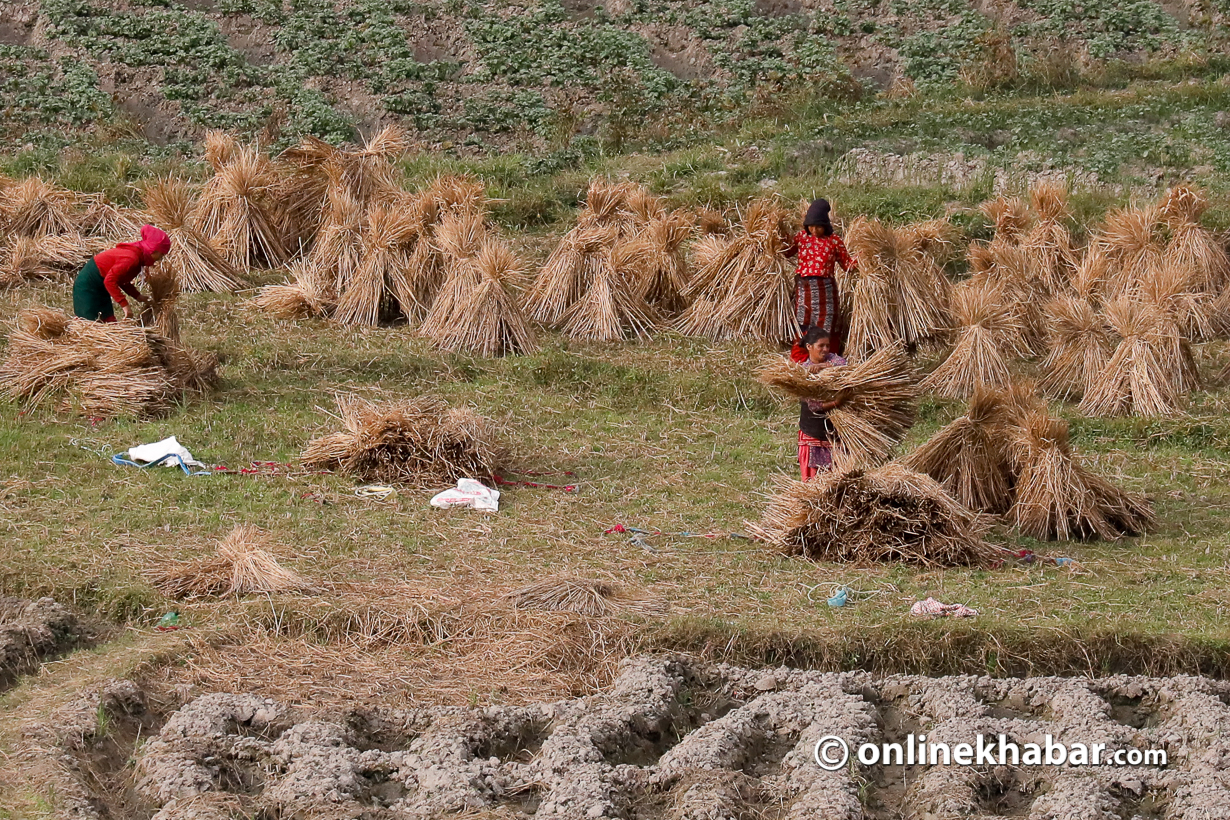
Various studies have shown that children from well-off families are less likely to be malnourished than their counterparts from low-income families.
However, recent studies suggest that this may not apply to some specific forms of malnutrition such as ‘double burden of malnutrition at the household level’. Researchers looking into the phenomenon, under which a mother is overweight but her child is stunted, report that it is not necessary that children from well-off families are always well-nourished.
When results from the National Demographic Health Survey 2016 was released, it was apparent that stunting among children born to uneducated mothers and those from low-wealth families was higher than that in the children born to educated mothers from well-off families. The survey found that while 46 percent children born to mothers with ‘no education’ suffered from stunting, the number halved (23 percent) in the case of women who had at least completed 10th grade. Likewise, the rate of stunting was relatively high among children from the lowest wealth quintile (49 percent) compared to the highest wealth quintile (17 percent).
But, the wealth divide in nutrition may not be so simple. A recently published study that compares the double burden of malnutrition at the household level in Nepal, Bangladesh, Pakistan, and Myanmar has found that women who have completed secondary level education and belong to well-off families are at ‘risk’ of malnourishing their children. The problem exists because the ‘excessively nourished’ mothers, most of whom work, have too little time to look after the children and provide them the necessary nutrients found in their own milk.
The double burden and its impact
The report ‘Double burden of malnutrition at household level: A comparative study among Bangladesh, Nepal, Pakistan, and Myanmar’ defines the ‘double burden of malnutrition at household level’ as “the coexistence of overweight mother and stunted child at the same household.” The report claims, “This particular public health concern is now emerging at an alarming rate among most of the South Asian and its neighbouring lower-and-middle income countries which are going through a nutritional transition.”
The study analysed samples and collected data from the most recent demographic health surveys of each country. While Nepal had conducted the latest survey in 2016, Bangladesh, Pakistan and Myanmar had conducted them in 2014, 2012/13 and 2015/16 respectively.
Asibul lslam Anik, the lead author of the report, informs that various interrelated factors lead to the problem. “Socioeconomic status, demographic characteristics, dietary habit, environment, social customs are contributing factors to the condition,” Anik, who currently works as a research officer for the Department of Public Health and Informatics, Bangabandhu Sheikh Mujib Medical University in Bangladesh, says, “These risk factors are different from country to country, and our main goal was to compare their impacts.”

Of these four countries, Nepal recorded the lowest level of DBMHL, 1.54 percent. Myanmar has the highest prevalence of the problem, at 5.54 percent. Though the figure seems negligible, it is still a big challenge to the countries’ journey towards achieving the second goal of sustainable development goals (zero hunger), according to the report.
“Moreover, DBMHL confers a serious and negative economic impact on individuals and populations. For example, through its effects on health, DBMHL increases healthcare costs of a country, reduces productivity and slows economic growth, which, in turn, can perpetuate a cycle of poverty and ill health for the long run,” the report quotes a WHO policy brief.
Explaining how a child gets stunted while the mother is overweight in the same family, Anik lists out a number of factors for each of these countries. But, overall, he points out that excessive consumption of sugar and fat-rich food by mothers and their failure to sufficiently breastfeed their children are two major problems.
The problem of the educated rich
Whereas major forms of malnutrition including stunting and wasting are more prevalent among poor and uneducated people, the double burden has a stronger presence in the privileged population. The research points out that it is more prevalent in urban areas than the rural areas in each of the four countries. For example, the problem’s prevalence is 1.42 percent in rural areas of Nepal whereas it is 1.63 percent in urban areas.
Because people with better education and financial status reside in urban areas in general, the lead researcher says that this problem belongs to the educated rich. According to him, the wealthy people living in urban areas are frequently involved in some unhealthy practices, keeping their families at the risk of the double burden of malnutrition. He explains that such practices mainly include: I) excessive intake of processed energy-dense foods (chocolates, hamburgers, pizza, French fries, nachos and other chips); II) lack of physical exercise; and III) regular consumption of sugar-sweetened soft drinks.

While such practices increase the body fat in general, pregnant women and new mothers are more liable to get even fatter thanks to the additional care they receive before and after childbirth.
“But their children do not get enough nutrients for their bodies regularly. Urban, rich and educated mothers usually don’t get time to take care of their baby because they work outdoors,” the researcher explains, “They do not find enough time to breastfeed, to feed them complementary foods, and to take care of the children in general. Instead, they depend on caretakers who might not have enough knowledge about the dietary intake required for the child. As a result, the child gets stunted.”
Simple solutions
After discussing different dimensions of the problem, the research suggests some solutions. They include: “providing education on the importance of equilibrium between energy intake and expenditure; promoting and supporting breastfeeding; ensuring conditions for optimal foetal and early child development; ensuring access to optimal maternal and antenatal nutrition and care; raising awareness among the rich people by highlighting the benefits of physical exercises; advertising campaigns through mass media on nutritional issues for sound feeding practices; and reducing poverty through empowering local communities.”
During a conversation with Onlinekhabar, Anik says, “Working mothers have to minimise the duration of their office work up to five hours per day and give up overtime work till their child is five. Proper and timely nutrition intake from birth until the age of five is crucial for any child.”
He further tells the mothers, “If you recruit a caretaker or babysitter, you have to ensure that the caretaker has enough dietary knowledge.” Though it sounds a bit patriarchal and regressive, he suggests that the mothers should perform most of their daily household chores on their own as much as possible. It has double benefits: while they can make sure they provide sufficient nutrients to the child, the chores work like a physical exercise for them, according to him.
He concludes that more research should be done in the field to explore other dimensions of the problem and find out more effective solutions.
Citation
Double burden of malnutrition at household level: A comparative study among Bangladesh, Nepal, Pakistan, and Myanmar. PLoS ONE 14(8): e0221274. https://doi.org/10.1371/journal.pone.0221274


























